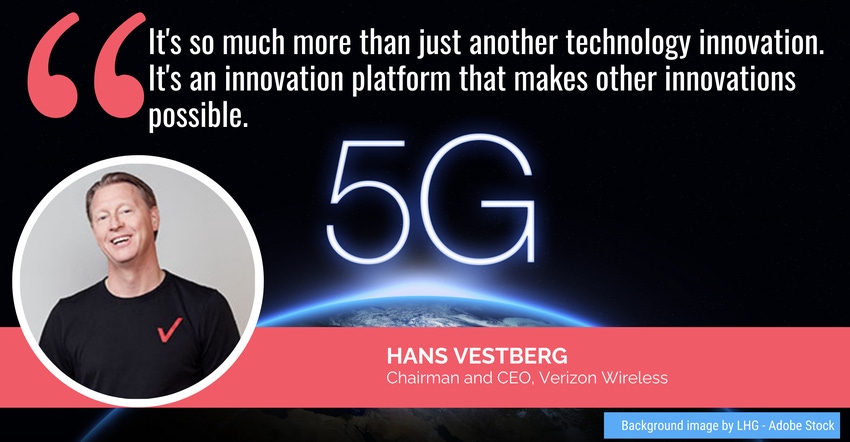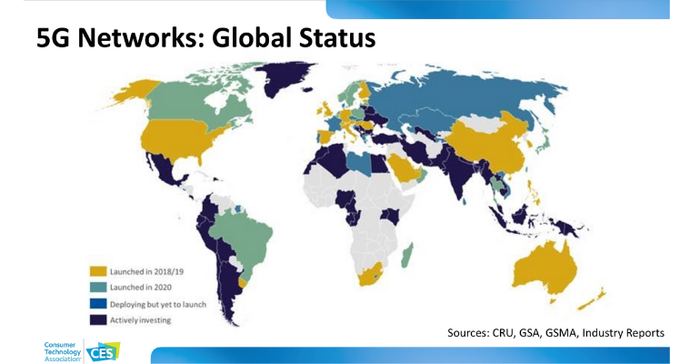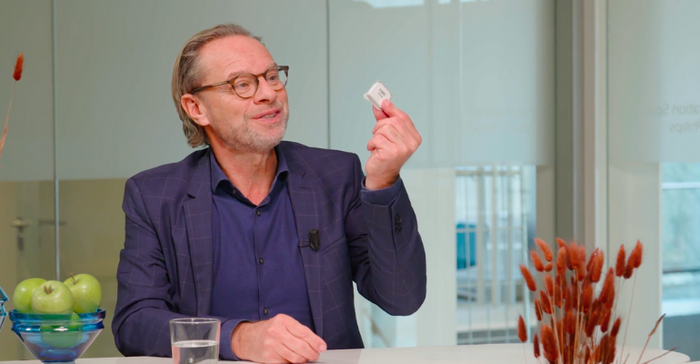What should medtech engineers and product developers know about 5G connectivity and materials selection?
January 12, 2021

Technology-based industries, including medtech, are only in the infancy stages of leveraging the full potential of 5G connectivity, but the excitement around the emerging technology was evident on the first day of the virtual Consumer Electronics Show (CES). In fact, it was the focus of Monday's kickoff keynote by Verizon Wireless CEO Hans Vestberg.
“One thing that became very obvious very quickly as COVID-19 began to spread around the world is that we leaped five to seven years [ahead] in the digital revolution," Vestberg said.
He said the global pandemic accelerated the timeline for remote working, distance learning, and telemedicine technologies.
"We knew it was coming, but it was closer than we realized," Vestberg said. "Now instead of being our future, it's our present."
5G is the most powerful world-changing connectivity technology ever developed, according to Vestberg.
"It's so much more than just another technology innovation, it’s an innovation platform that makes other innovations possible. It makes things better," he said.
One reason developers and entrepreneurs are so excited about 5G Ultra Wideband is the unparallel upload and download speeds, which enable peak throughputs that are at least 10 times faster than 4G, Vestberg said. The technology also provides enormous capacity with reduced lag time between a signal going from point A to point B, he said, which is what will finally make remote surgery possible.
Earlier in the day, Steve Koenig, vice president of research at the Consumer Technology Association, said there are currently about 135 commercial 5G networks set up around the world. It hasn't been a uniformed deplopment as illustrated by the map below, but Koenig predicted that by the middle of the decade we can expect to see 5G up and running around the globe.

"Congruent with so many existing uptrends in technology that we've seen today accelerate, 5G is also part of the story," Koenig said. "...These networks are going to grow, not only in scope but also in capability."
How 5G will impact materials selection
As the availability of 5G becomes more widespread, engineers and product developers need to put some forethought into materials selection.
"You've got to make sure that you mindfully select what materials you're using to maximize the efficiency of the 5G signal, so this is not something that traditionaly has ever been considered solely within the healthcare realm," Doug Hamilton, global healthcare sector leader at Covestro, told MD+DI.
5G networks require new levels of RF transparent and heat dissipating materials, according to Covestro.
Covestro said it is creating the materials that play a role in this new network infrastructure. Signal transmission and thermal management will be critical, the company noted. 5G transmitters call for robust, low-loss materials to minimize radio frequency interference in the mmWave spectrum. Highly durable and tough, weatherable and able to beat the heat, Covestro's Makrolon polycarbonate grades are ready for any 5G application, the company said.
In healthcare, 5G will be especially important for improving remote patient monitoring, which came up during Philips' fireside chat during CES on Monday.
"The principle of remote monitoring is essentially you stream data about your vital signs, your vitals, and it's not just about the moments but it's about the trends," said Jeroen Tas, chief innovation and strategy officer at Philips. "Are you stabilizing? Are you deteriorating? Do we see issues coming up?"
Tas pulled a small square-shaped wearable sensor from the pocket of his suit jacket as an example of what is possible in remote monitoring with the availability of 5G. He said Philips is evaluating the small device using 5G to demonstrate its efficacy.

"It keeps sending basically continuous data about yourself, and it works anywhere," Tas said. "I've actually been kitesurfing with this and it could track me while I was kitesurfing."
About the Author(s)
You May Also Like





